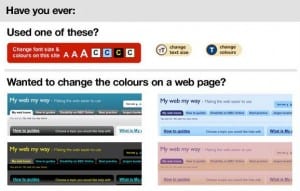Keynote Two, with Jane Hughes from Wolverhampton University, addressed the role of technology in teacher education programmes, suggesting there is not enough support for acquiring the digital literacies essential for learning in a digital age. In an echo from the first keynote, Jane reiterated the requirement for educating citizens of the future. We need to be equipping students for living and working in a digital society.
Inevitably this vision of adopting brave new digital worlds is countered by the risks involved in making changes in the current ‘risk-averse’ climate. Also raised was the lack of time and institutional support for moving to new digital ways of working. It’s something of a conundrum because on the one hand there are the advantages of digital engagement but on the other there is the short supply of ‘technologists of the learning kind’ and an even shorter supply of funding for development. Teacher education programmes may need to incorporate digital learning but teaching staff also need an informed basis for adopting new digital ways of working.
The challenge of Web 2.0 tools can be a steep learning curve. Not only do you need to learn through personal application which takes time, it also requires the paradigm shift from students as consumers to students as creators and collaborators in their own learning experiences. It was interesting to hear several references to ‘Student as Producer’ t the conference where the phrase was being aligned with those digital ways of learning which support student participation in the learning process.
The phrase Blended Learning Advisor was popular as were calls for an approach which begins with existing practices; looking at how technology can enhance through the language of ‘as well as’ rather than ‘instead of’. A clear message was for staff educators who are the users of technology to take the lead, rather than the tied and dyed technologists who may not have the necessary pedagogical frameworks. There were lots of examples of technology being raised and praised but not always in a scholarly way. This is where teacher education programmes can make a real difference and again ‘Student as Producer’ comes to mind with its ‘Digital Scholarship’ strand.
Overall was the recognised need for an infrastructure which supports the training and developing of digital literacies. These would include the confidence and competence with using and applying a range of Web 2.0 tools and selecting them appropriately to support digital modes of inquiry, collaboration and authorship. I liked Jane Hughes analogy of a jigsaw approach to learning because this I how using Web 2.0 tools can appear. A workshop led by Sue Buckingham and David Walker looked at social media for developing a professional learning network. It demonstrated the value of digital ways of working alongside the fear this can evoke in the uninitiated. The sheer number and variety of tools can be an insurmountable barrier. I’ve been dabbling for some time but hadn’t come across a Twitter Fountain or Drigo, Quora, Nefsis , VoiceThread or Peerwise. It’s this proliferation of content which is paradoxically inviting and threatening at the same time. However, engagement is often initiated in unexpected ways. It was in this workshop I heard the best advice. Some one said they didn’t want to use Twitter to talk about breakfast but having gained some funding, and something to talk about, they were experiencing the value of the networking tweeting can offer. It’s this experiential approach which can be the most useful key to unlocking some of the cognitive barriers.
Social media can be like finding a tree in a forest. Where do you begin? There are so many possibilities. As a result, digital divides on campus are inevitably widening. There is a real need for more bridges and teacher education programmes, where the lines between staff and students become blurred – as the collaborative and creative possibilities of social media already blur distinctions between teacher and learner – may be one of the more appropriate places to start building.
